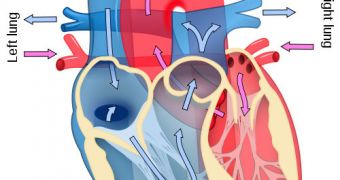In a groundbreaking new study, researchers in the United States were able to demonstrate that the heart of newborn mammals is capable of healing itself even after suffering moderate to large damage.
In the experiments, which were conducted on unsuspecting lab mice, the researchers extirpated a portion of an animal's heart when the mouse was only a week old. As researchers watched in amazement, the heart tissue grew back and replenished the missing segment in no time.
The healing process was so perfect that only very little indications remained of where the original damage had been made. Scientists at the UT Southwestern Medical Center were simply amazed.
This type of investigations hold great promise for advancing the field of science dealing with finding a cure for the wide variety of heart disease that exist out there today. But this particular study has other, more significant implications as well.
“We found that the heart of newborn mammals can fix itself; it just forgets how as it gets older. The challenge now is to find a way to remind the adult heart how to fix itself again,” says expert Dr. Hesham Sadek.
“This is an important step in our search for a cure for heart disease, the No. 1 killer in the developed world,” adds the expert, who is an assistant professor of internal medicine at UT SMC.
He is also the senior author of the new research paper detailing the study, which was made available online in the February 25 issue of the top journal Science. Similar researches proved that fish and amphibians have this ability, but this is the first time was noticed on mammals.
Unlike in fish and other animals, “the hearts of adult mammals lack the ability to regrow lost or damaged tissue, and as a result, when the heart is injured, for example after a heart attack, it gets weaker, which eventually leads to heart failure,” Dr. Sadek explains.
But it may be that the newborn heart is the key to today's heart problems. The little mouse that was anesthetized as part of this experiment had 15 percent of its heart removed, and all that tissue grew back within three weeks, Science Blog reports.
“The inability of the adult heart to regenerate following injury represents a major barrier in cardiovascular medicine,” says the UT SMC chairman of molecular biology, Dr. Eric Olson.
“This work demonstrates that cardiac regeneration is possible in the mammalian heart during a window of time after birth, but this regenerative ability is then lost,” says the expert, who is also a co-senior author of the new study.
“Armed with this knowledge, we can next work to discover methods to reawaken cardiac regeneration in adulthood,” he explains.
Olson is also the director of the Nancy B. and Jake L. Hamon Center for Basic Research in Cancer and the Nearburg Family Center for Basic and Clinical Research in Pediatric Oncology.

 14 DAY TRIAL //
14 DAY TRIAL //